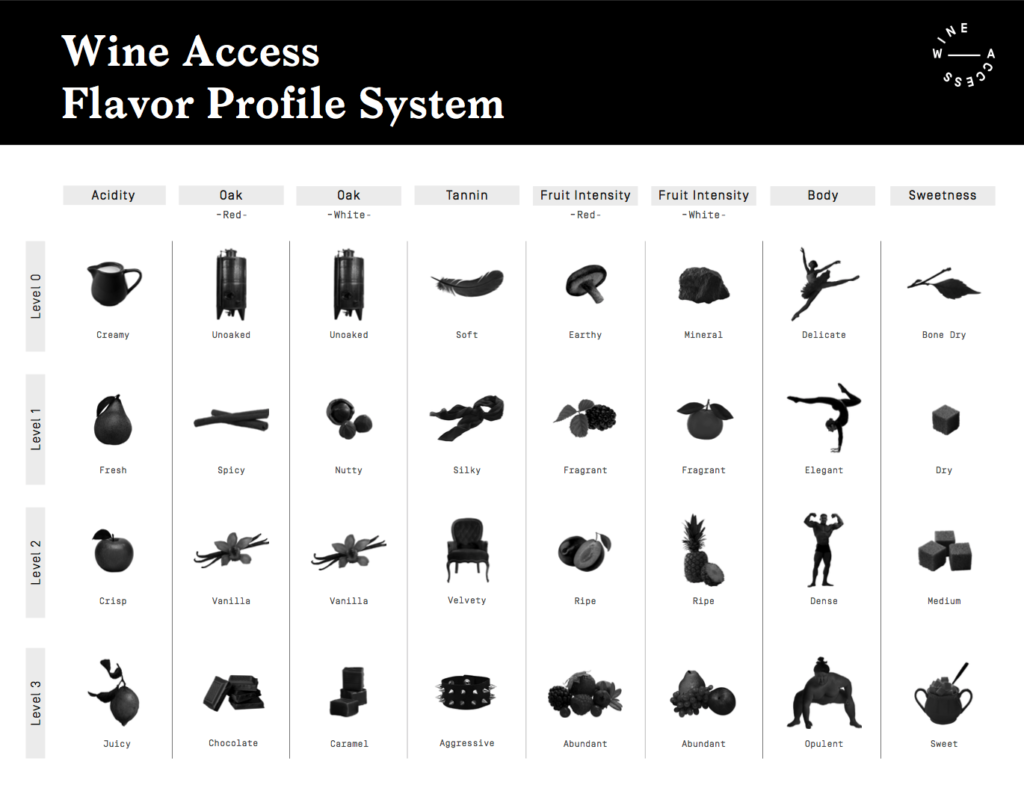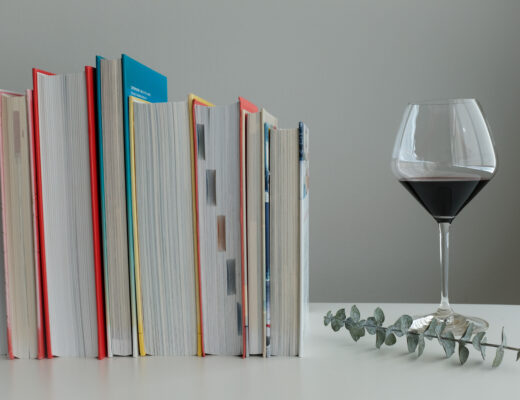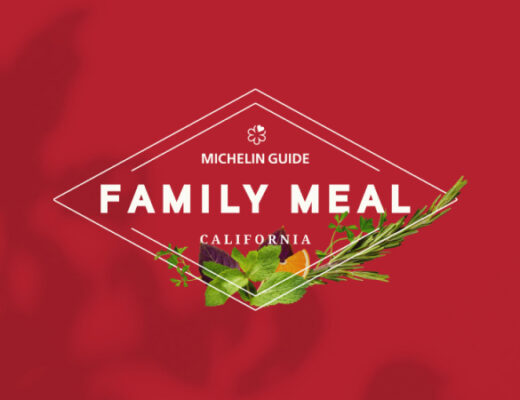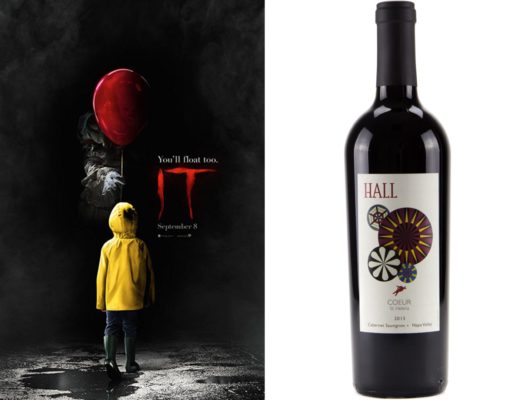You may have noticed that the wines we offer on our Store and through our daily discoveries now have a Wine Access score. Each wine we present to you has been vetted and selected by our Master Wine Team after undergoing a rigorous judging panel process in which the wine must earn a minimum score of 90 points out of 100.
Our Master Wine Team is comprised of myself, one of 45 Masters of Wine in the U.S.; Master Sommelier, Sur Lucero; and Master of Wine Candidate, Vanessa Conlin. The judging panel meets weekly and includes all three members of the Master Wine Team along with select guest experts. Each wine is poured for the judging panel to review, and each panelist provides a tasting note and score for each wine.
We believe that a wine qualifies as an outstanding offer if it achieves an average score of at least 90 points or above from the judging panel. If a wine falls below the 90-point threshold — and many exceptional wines do — we do not offer it to our Wine Access clients.
You will notice that our scores are typically the same or lower than many critics’ scores. We are the toughest critics of wines submitted to Wine Access because we are determined that the quality that you get from us be higher than any other place to buy wine. We are not beholden to any winery or importer and judge wine purely on absolute quality and how it over-delivers for money.
To be clear, suppose a wine earns a 95-point score. Whether that wine boasts a $20, $40, or $100 price-tag, the 95-point score is an assessment of the quality of the wine — not the quality of the wine at a certain price-point. A 95 is a 95 — and a truly outstanding wine at any price!
Wine Access Flavor Profile System 6 Attributes
In addition to our Wine Access scores, we’ve also developed a Flavor Profile System to help describe the wines we offer.

Our Master Wine Team has identified six main attributes of a wine that can be defined by four varying levels of intensity. While there are many different factors that can impact the way a wine tastes, the six components outlined below are the most consistent.
Learning about these will not only help you identify what you like about certain wines, but it can also help you discover new wines. For example, you might realize that when it comes to red wines, you actually prefer rich fruited, highly oaked, chewy-tannic reds, versus brighter, lighter fruit-driven, softer tannin reds with mouthwatering acidity.
ACIDITY
Acids are one of the four things that our tongues can taste along with bitterness, saltiness, and sweetness. When tasting acidity in wine, think of the soft acids of milk at one end of the spectrum and lemon juice at the other end, with infinite variation in between.
- Creamy Acidity: The softest wines — think of the texture of cream, typically the most buttery Chardonnays.
- Fresh Acidity: A notch above creamy with a metaphorical squeeze of lemon juice freshening the wine.
- Crisp Acidity: Acidity becomes a prominent part of the wine’s structure, like a crisp granny smith apple.
- Juicy Acidity: Like barely diluted lemon juice causing a mouthwatering, juicy effect in your mouth.
OAK
Oak can impart varying levels of flavor in wine, depending on: how much “new” or “used” oak comes in contact with the aging wine; size of the barrels; origin (French, American, Hungarian, etc.); newness and toasting levels as well as the duration of time the wine spends in contact with the oak.
- Neutral/Used/Unoaked: No oak-derived flavors, typically fresh, fruity wines.
- Moderately Oaked: moderate oak usage will manifest as gentle baking spices, either nutty or spicy or as grilled or roasted nuts.
- New Oak: New oak contains a flavor compound called vanillin, which imparts vanilla flavor.
- Heavily Oaked: very high levels of new oak impart sweeter flavors, can include mocha, chocolate, and caramel.
TANNIN
Tannins provide structure to both red and white wines, though more obviously in red wines as they are invariably fermented in contact with skins, seeds, and sometimes stems. Tannin is the drying affect on the finish, similar to when drinking tea.
- Soft Tannins: Very low, almost imperceptible levels of tannin.
- Silky Tannins: Light levels of very refined tannins that give gentle structure.
- Velvety Tannins: Fairly pronounced, noticeable tannins, but with a pleasant, furry texture.
- Aggressive Tannins: The most tannic wines that cause a strong mouth-drying effect.
FRUIT INTENSITY
The ripeness and intensity of fruit for each wine depends on climate, grape variety, and the stylistic choices of the winemaker — particularly the harvest date. Fruit intensity and ripeness can be detected both on the nose in terms of fruit aroma, and on the palate in terms of fruit richness and fleshiness.
- Mineral/earthy: In the absence of fruit flavor, neutral wines rely on mineral and earth aromas.
- Fragrant: Wines that are moderately ripe express floral and fresh, lifted fruit aromas.
- Ripe: Wines at the zenith of ripeness imitate perfectly ripe fruits.
- Abundant: Rich, often thick on the palate with very dark/tropical and sometimes dried fruit aromas.
BODY
The overall weight of the wine in the mouth. Think of the difference in palate weight between the different types of milks, with lightest bodied wines as having the body of fat free milk and the fullest bodied wines the weight of whole milk.
- Delicate body: Very light-bodied wines, similar to fat-free milk.
- Elegant body: Light-bodied wines similar to low-fat (1%) milk.
- Dense body: Much weightier wines similar to reduced-fat (2%) milk.
- Opulent body: The fullest, heaviest wines similar to whole milk.
SWEETNESS
Like acidity, sweetness is a taste that can be perceived by the tongue. Sweetness can be balanced by other components in the wine, particularly acid and tannin, so sweetness can be cloying or help smooth out the wine, depending on the overall balance.
- Bone dry: no perceived sweetness whatsoever.
- Dry: Just a touch of sweetness for balance.
- Medium: Definitely sweet, yet not overtly and well balanced.
- Sweet: Unctuously sweet.
This system also powers our store’s unique and adaptive digital profiling system, which pairs recommendations from our expert wine team with advanced technology to help the next generation of wine lovers and current wine collectors discover new wines. Over time, our system will make smarter recommendations to guarantee you’ll love every bottle of wine you buy on our website.
Of course, you can always lean on our hand-picked wine selections. But the next time you’re ordering wine at a restaurant or hosting a wine and cheese night, we hope this tool serves as your very own wine vocabulary cheat sheet to help you better understand why you like certain wines and encourages you to discover new ones.





